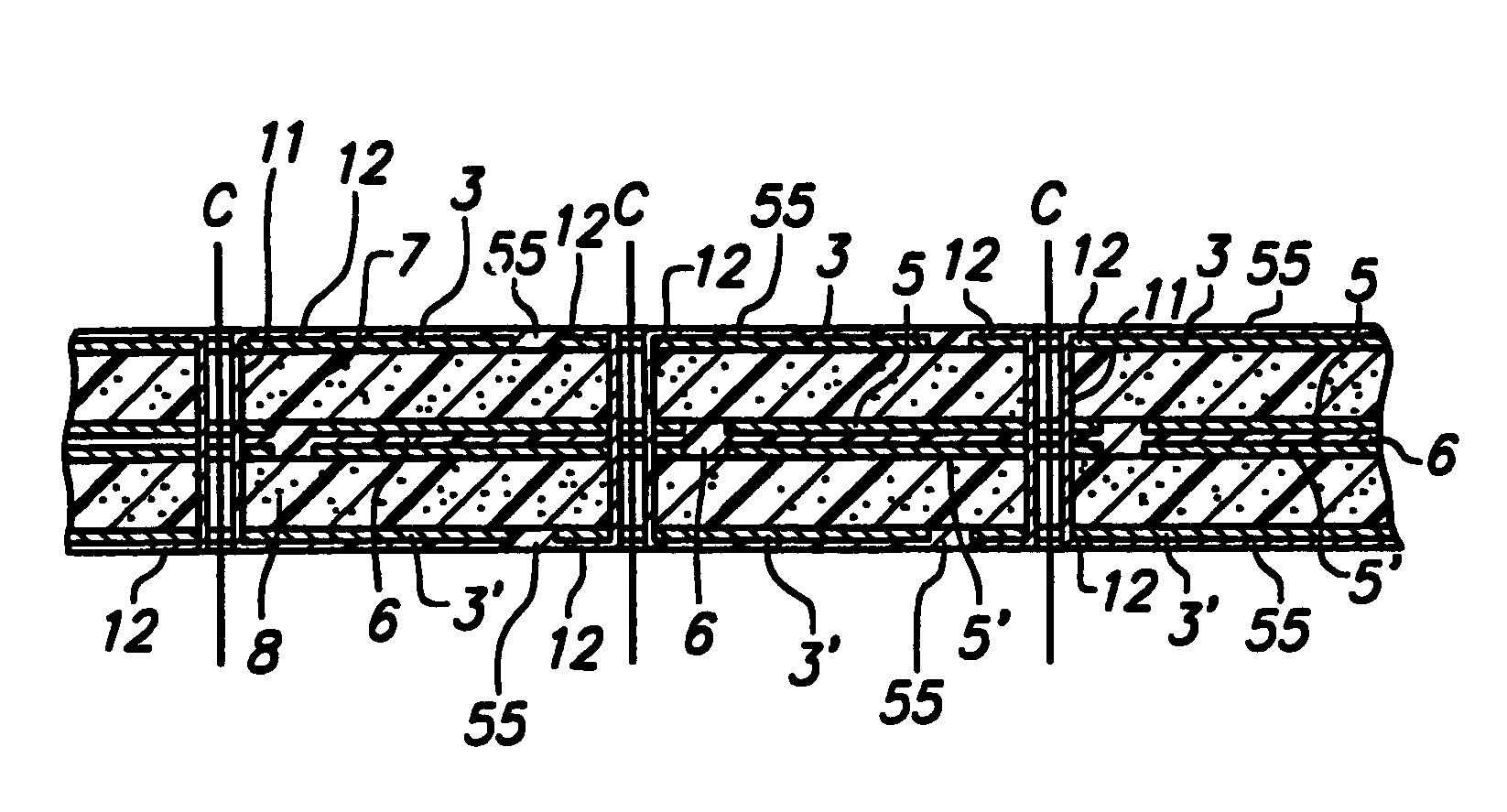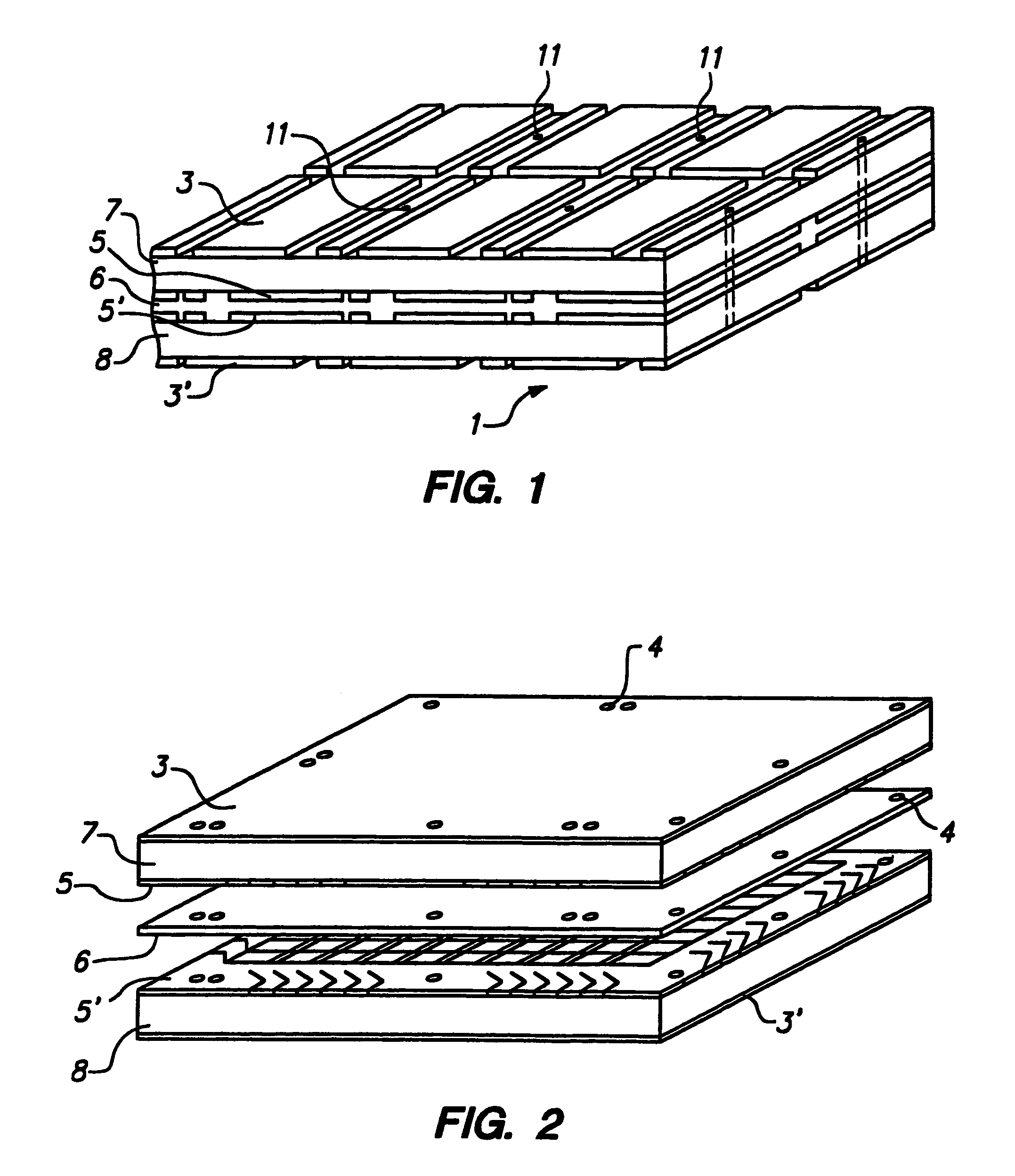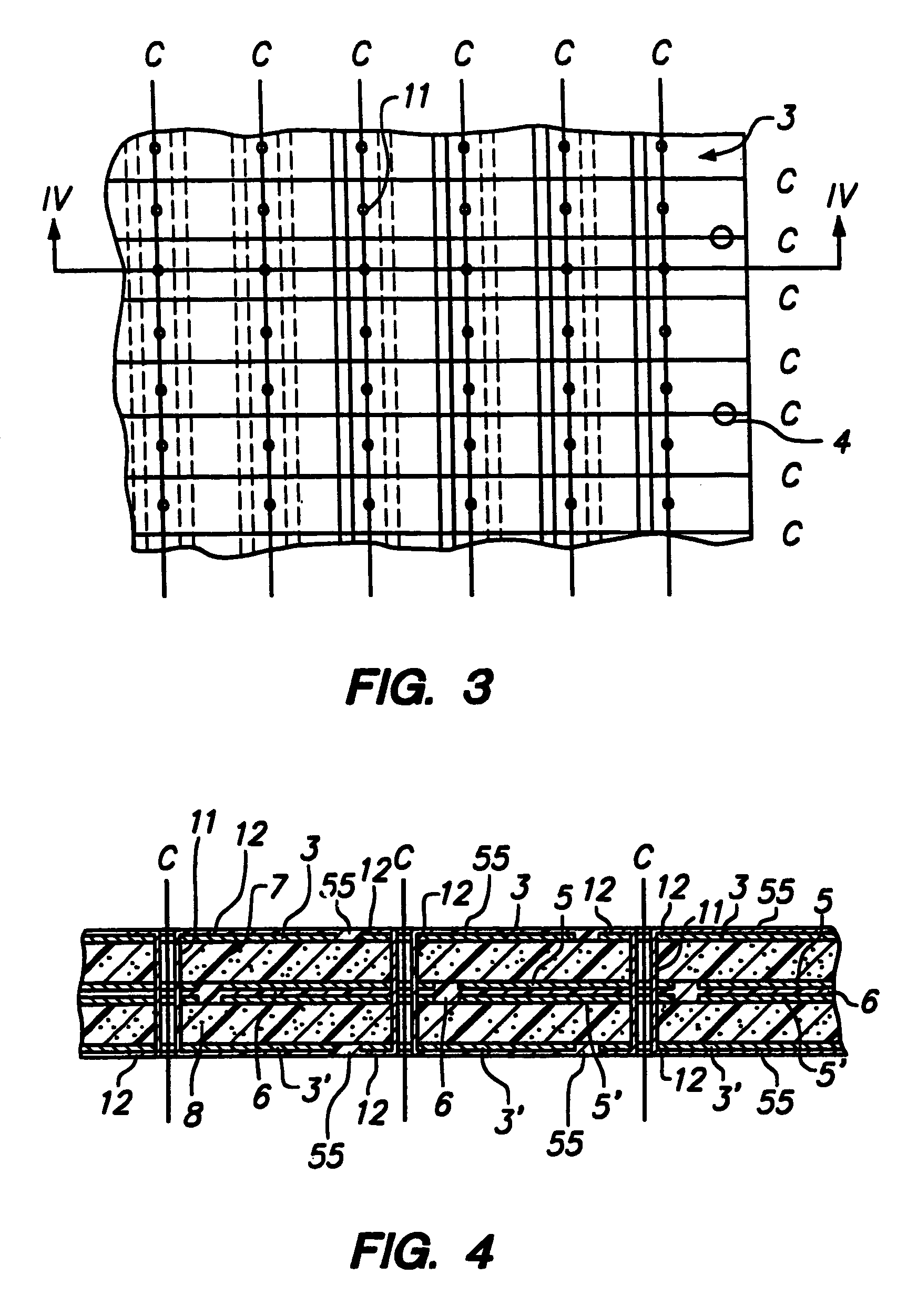Process for manufacturing a composite polymeric circuit protection device
a protection device and polymer technology, applied in the direction of resistor housing/enclosement/embedding, positive temperature coefficient thermistors, printed element electric connection formation, etc., can solve the problem of tedious process, and achieve the effect of simple device build-up and inexpensive mass production
- Summary
- Abstract
- Description
- Claims
- Application Information
AI Technical Summary
Benefits of technology
Problems solved by technology
Method used
Image
Examples
example
[0114]A stack in accordance with FIGS. 1 and 2 was prepared by the following method. Two laminates, each having a thickness of about 0.264 mm (0.0104 inch) were prepared by attaching a nickel / copper foil having a thickness of about 0.0356 mm (0.0014 inch) to both sides of a 0.193 mm (0.0076 inch)-thick sheet of conductive polymer. The conductive polymer was prepared by mixing about 40% by volume carbon black (Raven™ 430, available from Columbian Chemicals) with about 60% by volume high density polyethylene (Chevron™ 9659, available from Chevron), and then extruding into sheet and laminating in a continuous process. The laminated sheet was cut into individual laminates of 0.30 m×0.41 m (12 inch×16 inch). The laminates were irradiated to 4.5 Mrad using a 4.5 MeV electron beam.
[0115]Each of the laminates was drilled in an asymmetric pattern around its the periphery to provide holes and slots to register the laminates in a known x-y orientation in the plane of the laminate. These regist...
PUM
| Property | Measurement | Unit |
|---|---|---|
| resistance | aaaaa | aaaaa |
| resistance | aaaaa | aaaaa |
| resistance | aaaaa | aaaaa |
Abstract
Description
Claims
Application Information
 Login to View More
Login to View More - R&D
- Intellectual Property
- Life Sciences
- Materials
- Tech Scout
- Unparalleled Data Quality
- Higher Quality Content
- 60% Fewer Hallucinations
Browse by: Latest US Patents, China's latest patents, Technical Efficacy Thesaurus, Application Domain, Technology Topic, Popular Technical Reports.
© 2025 PatSnap. All rights reserved.Legal|Privacy policy|Modern Slavery Act Transparency Statement|Sitemap|About US| Contact US: help@patsnap.com



